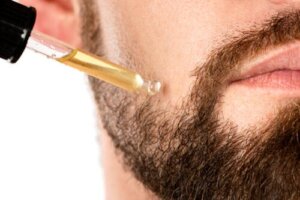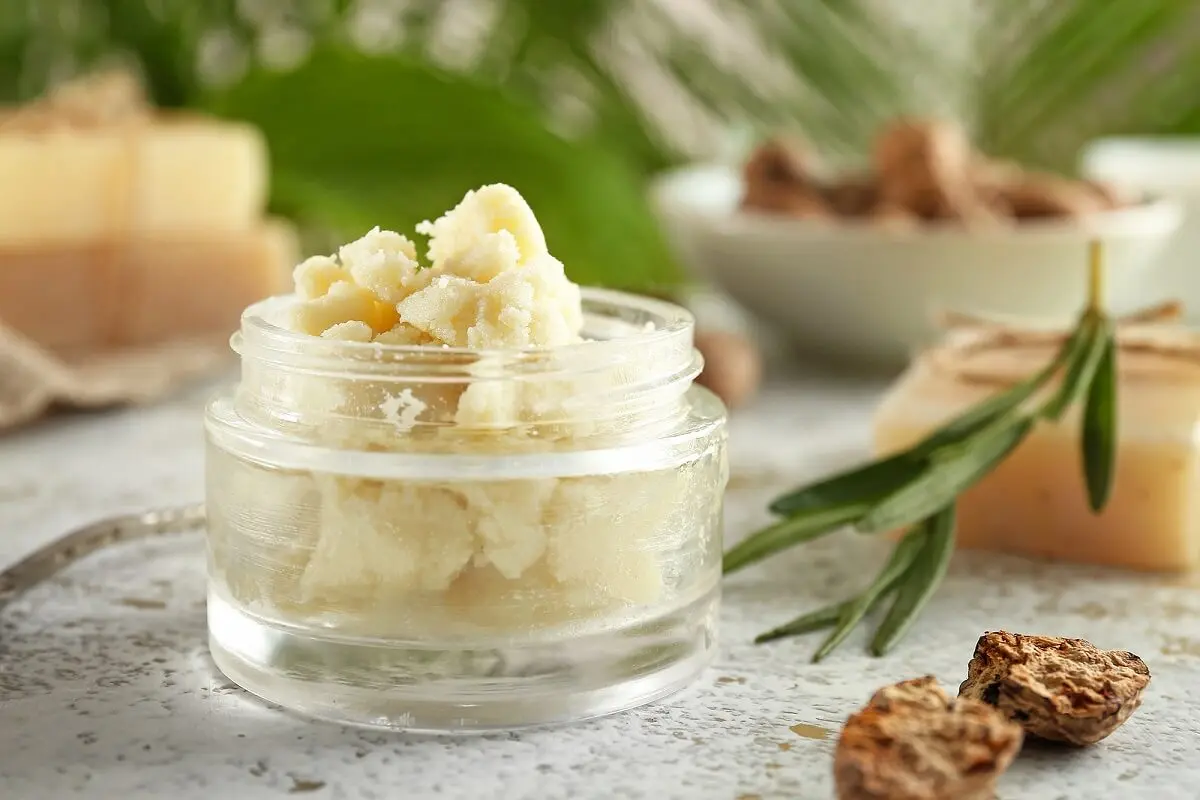A Natural Homemade Balm to Stimulate Beard Growth

Homemade natural balms have become popular as a supplement to stimulate beard growth. Specifically, they’re oil-based products that promises to nourish hair follicles to promote facial hair growth. Anecdotal evidence suggests that frequent use yields favorable results.
Still, opinions are divided regarding their real efficacy. While some support them, others question their purported benefits.
In any case, it’s easy to make a beard balm and its ingredients are generally safe for most people. Are you up for trying it? Here are all the details!
What you should know about beard growth
Before discovering the recipe to prepare the balm to stimulate beard growth, it’s important to make some clarifications about it. First of all, it’s useful to know that facial hair growth is largely determined by genetics and hormonal activity.
In particular, hypotheses suggest that testosterone levels – particularly dihydrotestosterone (DHT) – play a role in this process. This sex hormone is linked to the development of many male characteristics, including the beard. If its levels are low, it’s more difficult for it to appear.
However, it’s a fact that genetics is the biggest influencer. When parents or grandparents had difficulties with facial hair growth, the chances of having the same drawback are high. Even if this is the case, growing a beard with supplements and products won’t be an easy task.
However, generally speaking, practicing some healthy habits can help maintain stable testosterone levels and, therefore, can positively influence beard growth. This includes the following:
- Regular physical exercise: In particular, weight lifting and strength training are the best options, as they’re associated with a temporary increase in testosterone.
- Maintain a healthy diet: An optimal intake of protein, zinc, vitamins A, B, C, D, and E is very beneficial. Fruits, vegetables, lean meats, fish, and whole grains should not be missing from your diet.
- Sleep well: Studies suggest that daily sleep restriction may play a role in lowering testosterone levels in men. Therefore, it’s very important to ensure optimal rest.
- Wash and moisturize your beard: The American Academy of Dermatology recommends washing the beard area thoroughly every day to prevent dirt from accumulating in the pores and to help remove dead skin cells. Also, remember the importance of moisturizing to keep the hairs growing in a healthy appearance.

We think you may also enjoy reading this article: 9 Foods You Should Eat to Boost Hair Growth
How to make a homemade natural balm to stimulate beard growth
The interest of many men in stimulating beard growth has led to the development of a wide variety of natural and chemical products for that purpose. Homemade natural balm is one of many options available. It’s noted for its combination of gentle ingredients for most skin types.
However, it’s important to bear in mind that there’s no scientific evidence of its efficacy. Claims of its benefits come from anecdotal data or testimonials on the web.
Thus, it can’t be categorized as a miracle product or something along the lines. Nevertheless, if you decide to try it, be sure to be consistent with its use.
Ingredients
- 20 grams of jojoba oil
- 15 grams of coconut oil
- 4 drops of cedar oil
- 4 drops of sandalwood oil
- 15 grams of sweet almond oil
Note: you also need a glass jar with a lid or a bottle with a dropper.
Preparation
- To begin, mix the jojoba oil with almond oil and coconut oil.
- Then, add the drops of the essential oils.
- Cap the product and shake it well so that everything is well-mixed.
- Leave it in a cool, dry place to keep it in good condition.
How to apply
Spread a small amount of product on the beard area and massage for 2 to 3 minutes. No rinsing is necessary.
Another optional recipe with shea butter
Another homemade balm to stimulate beard growth is made with shea butter as the main ingredient. According to information shared in the American Journal of Life Sciences, topical use of this product has emollient, moisturizing and protective effects.
It’s even believed that in the long term it acts against aging. So, beyond promoting facial hair growth, this product is useful to complement facial care.
Ingredients
- 10 grams of beeswax
- 15 grams of coconut oil
- 20 grams of shea butter
- 15 grams of almond oil
- 5 drops of tea tree essential oil
As in the previous case, you need a sterilized and airtight glass jar to store the product.
Preparation
- Incorporate the ingredients (except the tea tree oil) in a heat-resistant container and place them in a double boiler.
- Once melted, mix well until you get a ver well-mixed product.
- Remove from heat and let it stand for a few minutes.
- Before it becomes a solid paste, add the drops of tea tree oil.
How to apply
Take a small amount of balm and rub it on your beard with gentle circular massages. Leave on for 20 minutes and rinse with lukewarm water.

Like this article? You may also like to read: How to Use Horsetail to Help with Hair Growth
Recommendations for safely using beard balm
In general, balm recipes to stimulate beard growth are safe. Despite this, before applying the product in its entirety, it’s best to do a small patch test to rule out any unwanted reactions.
What does this mean? Well, it means applying the product to a small area of the skin. If after 12 hours there are no reactions, it can be used without any problem.
For oily or acne-prone skin, it’s recommended to look for other alternatives. This is because balms contain ingredients that tend to be comedogenic, which can worsen the problem.
What should you remember about balm to stimulate beard growth?
Although natural balm recipes have become popular as a supplement to stimulate beard growth, there’s still no scientific evidence of their effectiveness. However, there are those who claim that its application brings benefits when used consistently.
In any case, keep in mind that genetics and hormonal activity play a major role in this process. In fact, while it’s difficult to do anything about it, practicing healthy habits is extremely beneficial.
Ultimately, it’s a good idea to consult a doctor or dermatologist for alternatives. Some commercial formulas such as topical minoxidil 5% and topical melatonin have shown favorable results. However, their safe use and possible side effects should be investigated before you use them.
All cited sources were thoroughly reviewed by our team to ensure their quality, reliability, currency, and validity. The bibliography of this article was considered reliable and of academic or scientific accuracy.
- Randall VA, Thornton MJ, Hamada K, Messenger AG. Androgen action in cultured dermal papilla cells from human hair follicles. Skin Pharmacol. 1994;7(1-2):20-6. doi: 10.1159/000211269. PMID: 8003318.
- Vingren JL, Kraemer WJ, Ratamess NA, Anderson JM, Volek JS, Maresh CM. Testosterone physiology in resistance exercise and training: the up-stream regulatory elements. Sports Med. 2010 Dec 1;40(12):1037-53. doi: 10.2165/11536910-000000000-00000. PMID: 21058750.
- Prasad AS, Mantzoros CS, Beck FW, Hess JW, Brewer GJ. Zinc status and serum testosterone levels of healthy adults. Nutrition. 1996 May;12(5):344-8. doi: 10.1016/s0899-9007(96)80058-x. PMID: 8875519.
- Leproult R, Van Cauter E. Effect of 1 week of sleep restriction on testosterone levels in young healthy men. JAMA. 2011;305(21):2173-2174. doi:10.1001/jama.2011.710
- A dermatologist’s top tips for a healthy beard. (2021). American Academy of Dermatology.
Available in https://www.aad.org/public/everyday-care/skin-care-secrets/face/healthy-beard -
Israel, M. O. (2014). Effects of Topical and Dietary Use of Shea Butter on Animals. In American Journal of Life Sciences (Vol. 2, Issue 5, p. 303). Science Publishing Group. https://doi.org/10.11648/j.ajls.20140205.18
- Suchonwanit P, Thammarucha S, Leerunyakul K. Minoxidil and its use in hair disorders: a review [published correction appears in Drug Des Devel Ther. 2020 Feb 10;14:575]. Drug Des Devel Ther. 2019;13:2777-2786. Published 2019 Aug 9. doi:10.2147/DDDT.S214907
-
Fischer TW, Slominski A, Tobin DJ, Paus R. Melatonin and the hair follicle. J Pineal Res. 2008 Jan;44(1):1-15. doi: 10.1111/j.1600-079X.2007.00512.x. PMID: 18078443.
This text is provided for informational purposes only and does not replace consultation with a professional. If in doubt, consult your specialist.








